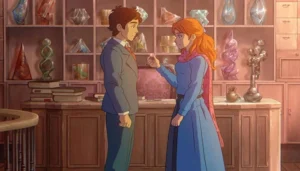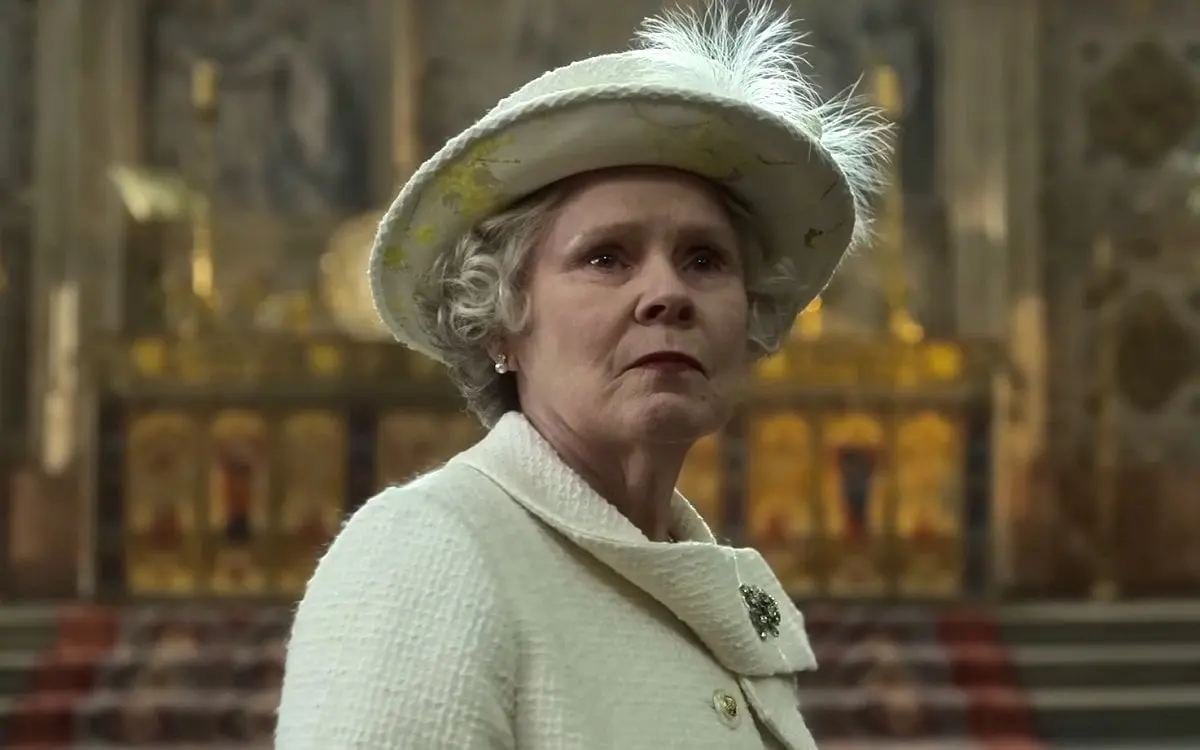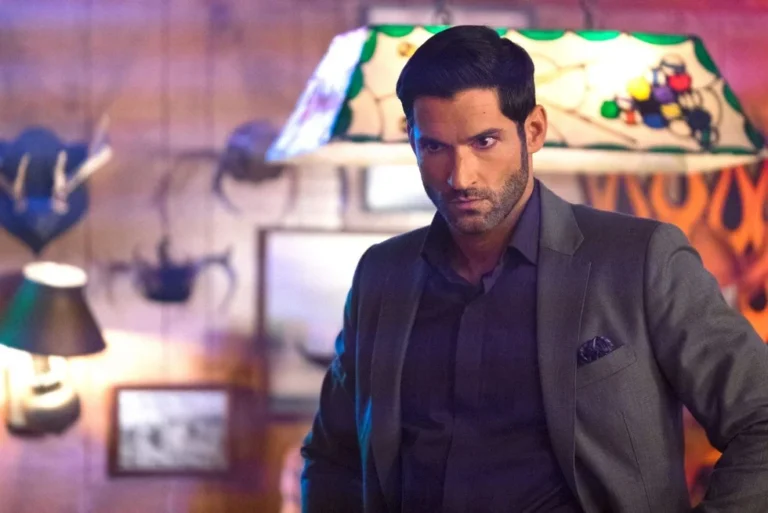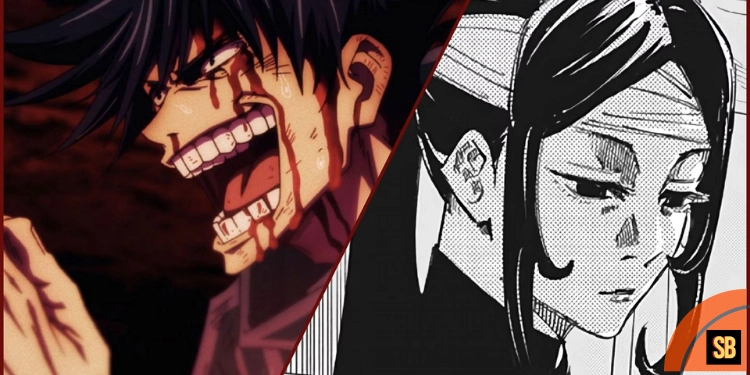As fans bid a royal farewell to The Crown after six seasons and a whopping 10 Emmy wins, the series finale gracefully brings the focus back to where it all began: the indomitable Queen Elizabeth II. In an episode titled “Sleep, Dearie Sleep,” the show’s creators craft a poignant narrative that explores the queen’s mortality, her reflections on the past, and a symbolic encounter with her younger selves.
The final episode unfolds with Charles’s heartfelt proposal to Camilla, setting in motion a chain of events that delves into the complexities of love, duty, and the inevitable passage of time. At the breakfast table, Charles eagerly pops the question, and Queen Elizabeth, ever the matriarch, finds herself in the delicate position of granting her approval. The narrative takes a surprising turn as the queen, amidst planning her own funeral in the somewhat morbidly named “Operation London Bridge,” contemplates the future of the monarchy.
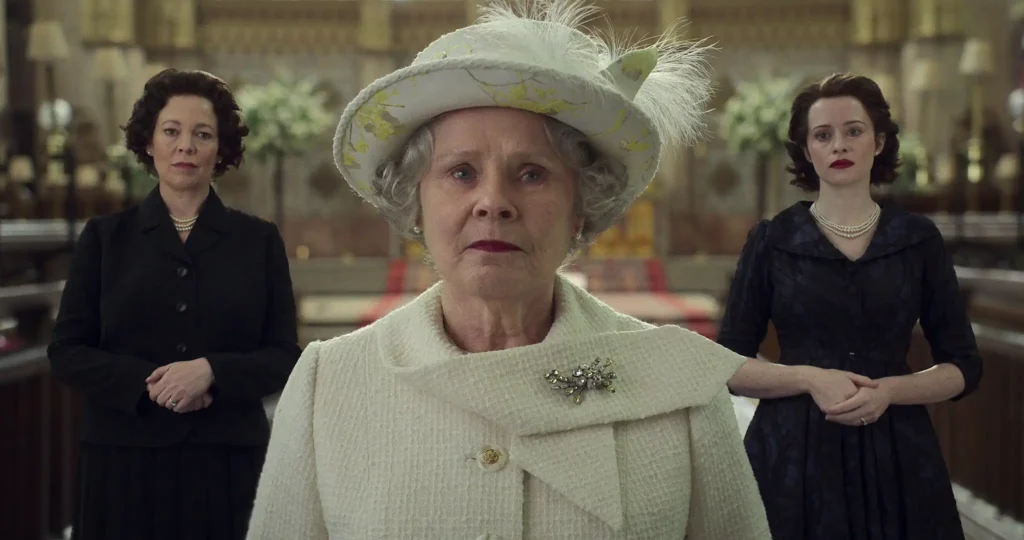
A notable scene unfolds as Elizabeth, portrayed by the exceptional Imelda Staunton, engages with the church bishops to seek their counsel on Charles and Camilla’s union. The bishops, cautious of consecrating a past infidelity, recommend a nuanced approach that involves a civil ceremony followed by a church blessing—an attempt at atonement for perceived sins. The queen, grappling with the conflict between duty and personal beliefs, asserts that she doesn’t want the future King of England living in sin.
The narrative takes a nostalgic turn as Elizabeth seeks the opinions of her grandsons, William and Harry, on Charles’s request. The generational gap is evident as William, recognizing Camilla’s positive impact on his father’s happiness, approves of the union. In contrast, Harry, ever the rebel, expresses his discontent, setting the stage for a costume party that becomes the center of a fresh controversy.
The emotional core of the episode surfaces as Elizabeth, portrayed with finesse by Imelda Staunton, admits to her husband Philip that the funeral preparations have stirred up emotions within her. A touching moment transpires as she consults the royal bagpiper, seeking a suitable song for her own funeral. The chosen melody, “Sleep, Dearie Sleep,” sets the stage for a series of soul-stirring moments that delve into the queen’s past.
The brilliance of the episode lies in its utilization of flashback sequences featuring the younger versions of Elizabeth, portrayed by the remarkable Claire Foy and Olivia Colman. As Elizabeth grapples with the decision to step down and let Charles ascend the throne, her younger selves become avatars of opposing viewpoints. Claire Foy’s Elizabeth, representing the past, urges her to consider retirement, emphasizing the toll that years of service have taken on her. In a moment of vulnerability, present-day Elizabeth begins penning a speech for Charles’s reception.
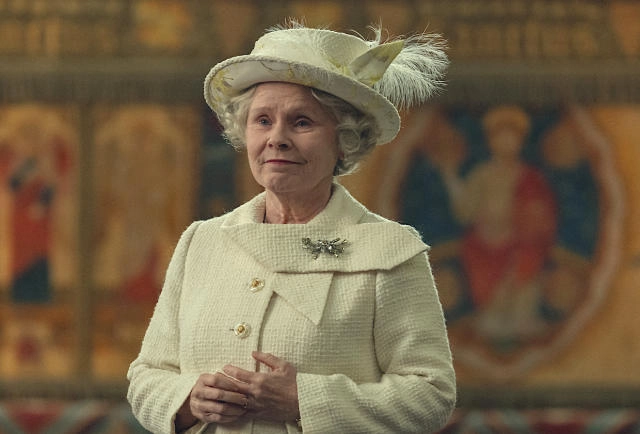
However, the narrative takes a surprising turn as Olivia Colman’s Elizabeth, embodying the present, challenges the notion of retirement. Colman’s Elizabeth contends that the queen is in her prime, much like Charles, and that the role of monarch comes naturally to her. The younger self reminds her of the mess made by her predecessors and asserts that the woman she was before becoming queen has long been buried.
The series finale reaches its crescendo at Charles and Camilla’s reception, where Queen Elizabeth delivers a speech that defies expectations. Her decision not to abdicate becomes evident as she navigates the delicate balance between duty and personal desires. The scene is a testament to Staunton’s impeccable portrayal of the queen’s inner turmoil, capturing the essence of a woman torn between tradition and the evolving winds of change.
A symbolic and emotionally charged sequence unfolds as Elizabeth, accompanied by her younger selves, walks past an imaginary coffin adorned with her crown and scepter. The imagery is a poignant representation of the queen confronting her own mortality and the legacy she leaves behind. The presence of Foy and Colman’s Elizabeths serves as a powerful visual metaphor, embodying the monarch’s past as she steps into the future.
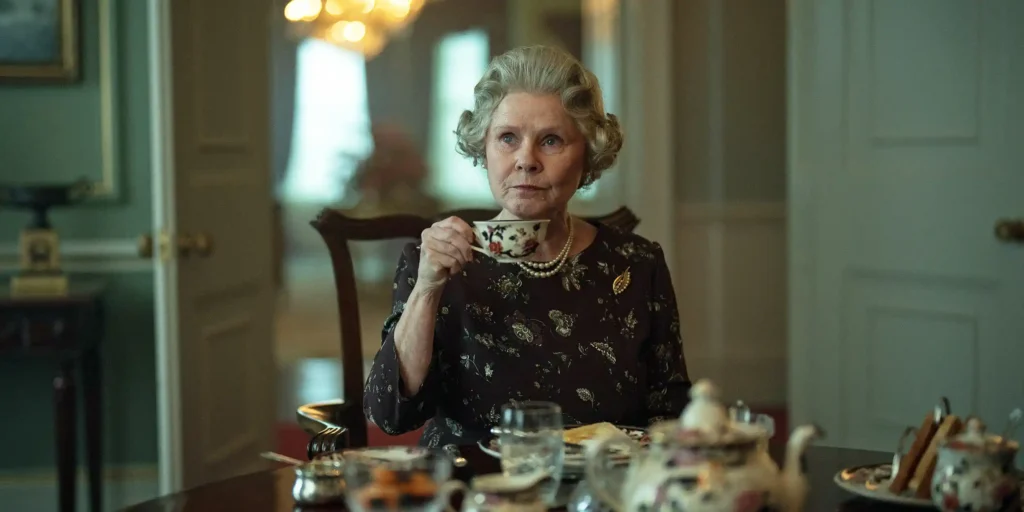
The series concludes with a breathtaking shot of Queen Elizabeth standing alone in a vast chamber, reflecting on a lifetime of service. Imelda Staunton’s Queen, holding her purse, witnesses a vision of her bagpipe player performing the chosen funeral song. As she paces towards the exit, a symbolic coffin appears, topped with her crown, orb, and scepter. A young Elizabeth, clad in a WWII uniform, salutes the queen, while Foy and Colman’s versions stand as steadfast visions of the monarch’s past.
In a cinematic moment, the queen walks through an empty Abbey, gradually diminishing in size as she approaches a bright white light—a symbolic closure to a series that, at its core, masterfully portrayed the monarch at its center. The door opens, revealing the metaphorical exit, and as Queen Elizabeth exits, the door closes behind her, signifying the end of an era of prestige television.
In the grand tapestry of The Crown‘s final episode, Queen Elizabeth comes face to face with her past selves, reconciling with the choices made, the sacrifices endured, and the enduring legacy she leaves behind. It’s a fitting conclusion to a series that has captivated audiences with its nuanced exploration of royalty, human emotion, and the inexorable passage of time.






